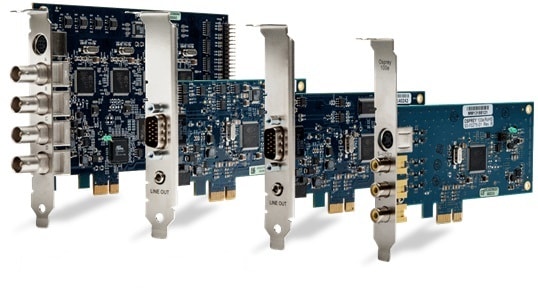
Everything You Need To Know About – PCI/PCIe Expansion Cards
The high demands of high-end software has lead to hardware manufacturers rush to design new quality technologies and enhance computer components to satisfy the demands.
With the high rate of technology growth, the speed and power of computer components have recently increased a lot;
Thus leading to the computer and its’ components, manufacturers developing new applications that are capable of keeping up with the increased power and speed of PC.
Simply the PCI allows you to connect computer components such as memory, video systems, sound systems, hard disks among others to the computer’s processor.
For instances, a graphics card is able to communicate to the computer processor through a PCIe too. And mainly the graphics card is what allows the display of images on your PC.
The best thing about PCI is that it allows you to interchange some computer parts. For example, in case you are in need of a better graphics card, you can simply remove the old one and plug in the graphics card you desire.
On the computer’s motherboard, there are mainly two different types of Expansion Slots are available. The first one is “PCI”, and the second one is “PCIe (PCI Express)”, as you can see on every latest motherboard where the PCIe slots are actually available in four different sizes (which also decide it’s speed too).

Peripheral Component Interconnect (PCI) Card, also known as PCI bus or Conventional PCI is the connection interface that connects computer components to the computer. Sometimes back PCI slot was commonly used connect video cards to the PC but due to the demanding graphics technology in the gaming sector it was no longer reliable. PCI was more popular from the year 1995 to the year 2005, later it was replaced by other advanced technologies like PCI Express and USB.
In order to be backward compatible desktop computers still comes with PCI slots attached on their motherboard, however, nowadays the devices that used to attached as PCI expansion that era are now attached (integrated) onto the computer motherboards or sometimes they are attached by other computer connectors like PCIe (PCI Express).
And To Know More, Feel Free To Follow The Given Links:
#So, Let’s Dig Something More;
PCI allows you to interchange different peripherals that are connected to the PC. In other words, it allows the use of different hard drives and sound cards. Generally, the motherboard features about 3 to 4 PCI or PCIe slots.
You can simply plug in the component you desire by unplugging the old one or in case you have an open slot you can plug in the new peripheral. Most computers come with numbers of PCI/PCIe bus to handle different types of traffic. 64-bit and 32- bit are the two versions that PCI bus comes in, and the bus runs at 66MHz or 33MHz.
PCI cards give your PC additional capabilities. Some of the PCI devices out there include a network card, modem, sound card and video card. The number of PCI slots on a motherboard depends on the model and manufacturer of the motherboard.
Nowadays very few motherboards features PCI slots, instead they come with the new PCIe. However, those motherboards that still features PCI, comes with 1 to 3 PCI SLOTS.
Sometimes your computer might lack a PCI slot, which is very necessary when it comes to adding a PCI card. How do add a PCI card, if your computer lacks a PCI slot? And the answer is;
You should get a more advanced card that your computer motherboard will support.
#So, Let’s See How Many Different Types Of Are They;
PCI / PCIe cards come in different sizes and shapes known as form factors. We have full-size cards, short cards and other variations include Compact PCI/PCIe, low-profile PCI/PCIe, mini PCI/PCIe and so on. While Full-size PCI/PCIe cards are about 312 mm long, short cards are about 119 to 167 mm long.
Where the PCI uses 47 pins to connect to your computer. Devices that use 5 volts or 3.3 volts are the only devices that get support from PCI.
Bearing in mind that the physical card dimensions differs, lets us look at different PCI / PCIe cards in terms of physical variations
- Full-Height Cards: The full-length PCI/PCIe cards are defined using two lengths. The length of the full-height cards falls between 120mm and 107mm. The card height measurement includes the card edge connector.
- Low-profile cards: Most low-profile cards comes with a height of about 2 mm. These types of cards are also known as half-height cards or LPPCI. These cards do not fit on a standard desktop, 3U rack-mount PC case or tower. How they can fit very well in various new SFF (small form-factor) desktop cases or even in some 2U rack-mount cases. Sometimes this card can be regarded as ‘slim’. Many manufacturers out there will offer you both types of card brackets, the card usually has a bracket attached to it, and also comes with a pair of the screw, thus you can change it with ease. There two standard lengths for low-profile cards in the market, namely as MD2 and MD1.
- Mini PCI: Mini PCI is usually used on laptops. Mini PCI supports both DMA and bus mastering. Unlike desktop PCI cards that comes with brackets carrying connectors, with Mini PCI you can’t access the card outside the case, thus limiting the card functions. The manufacturers came up with several Mini PCI devices such as Fast Ethernet, Wi-Fi, Bluetooth, sound cards, modems, SATA, SCSI and cryptographic accelerators.
“And that’s all for now, thanks for sticking with the article, and you know it will always good to let me know about the tutorial, in the comments down below.” 🙂














